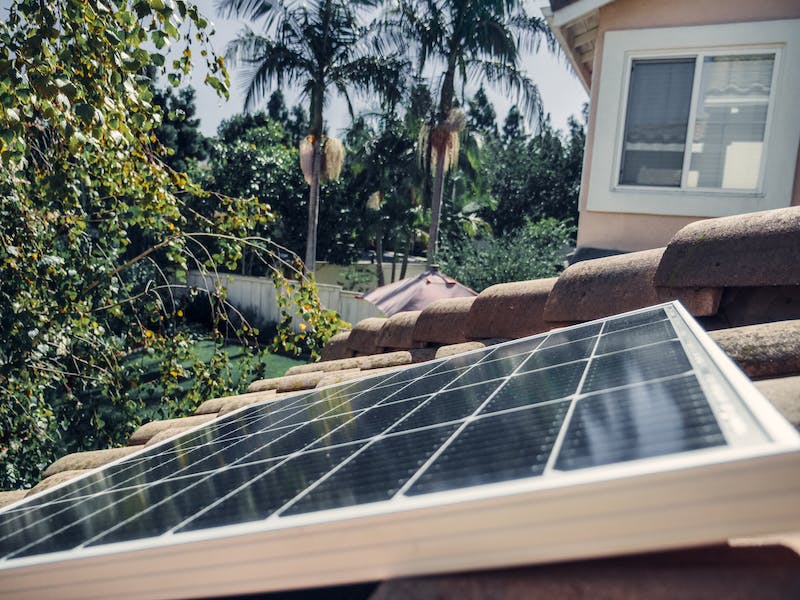Paddle Power: Navigating the Right Choice for Your Kayak's Performance and Comfort

In this article:
Intro Key Takeaways Understanding Kayak Paddles Materials Used in Paddle Construction Blade and Shaft Design Types of Paddle Construction Determining the Right Paddle Size Paddle Length Based on Kayak Width and Paddler’s Height Understanding the Size Chart Choosing the Paddle Based on Kayaking Style Paddles for Recreational Kayaking Paddles for Whitewater Kayaking Paddles for Racing Paddles for Fishing Paddles for Touring Factors to Consider When Choosing a Paddle Comfort and Efficiency Material and Weight Blade and Shaft Choices Budget Considerations Trying Out Different Paddles Participating in Demo Days Narrowing Down Your Options Frequently Asked Questions
When it comes to kayaking, choosing the right paddle is just as important as choosing the right kayak. A good kayak paddle is essential to efficient and comfortable paddling, and can make all the difference in your kayaking experience. However, with so many different types of kayak paddles available, it can be hard to know where to start.
Understanding kayak paddles is the first step in choosing the right one for you.
Kayak paddles come in a variety of lengths, materials, and blade shapes, each designed for specific purposes and preferences. Determining the right paddle size for your body and kayak is also crucial, as an ill-fitting paddle can lead to discomfort and inefficient paddling.
Key Takeaways
Understanding the different types of kayak paddles is crucial to choosing the right one for you.
Determining the right paddle size for your body and kayak is essential for efficient and comfortable paddling.
Trying out different paddles and considering factors such as paddling style and budget can help you find the perfect kayak paddle for your needs.
Understanding Kayak Paddles
When it comes to kayaking, choosing the right paddle can make a big difference in your overall experience. A good paddle will give you more power, better control, and less fatigue. In this section, we’ll go over the different factors you should consider when choosing a kayak paddle.
Materials Used in Paddle Construction
Kayak paddles can be made from a variety of materials, including wood, aluminum, fiberglass, and carbon fiber. Each material has its own advantages and disadvantages. Wooden paddles are traditional and beautiful, but they can be heavy and less durable. Aluminum paddles are affordable and lightweight, but they may not be as strong as other materials. Fiberglass paddles are strong and lightweight, but they can be expensive. Carbon fiber paddles are the lightest and strongest, but they are also the most expensive.
Blade and Shaft Design
The design of the blade and shaft can also affect the performance of your paddle. Blade design can impact the power and efficiency of your stroke. Some paddles have feathered blades, which means the blades are set at an angle to reduce wind resistance.
Asymmetrical blades are designed to provide more power on one side of the stroke. Shaft design can impact the comfort and control of your paddle. Some paddles have a bent shaft, which can reduce wrist fatigue and provide a more ergonomic grip.
Types of Paddle Construction
Kayak paddles can come in one-piece, two-piece, or four-piece construction. One-piece paddles are the most traditional and offer the most strength and durability.
Two-piece paddles are more convenient for storage and transport, but they may not be as strong as one-piece paddles. Four-piece paddles are the most convenient for travel, but they may not be as strong as two-piece or one-piece paddles.
Overall, choosing the right kayak paddle can greatly enhance your kayaking experience. Consider the materials used in paddle construction, blade and shaft design, and types of paddle construction when making your decision.
Determining the Right Paddle Size
Choosing the right paddle size is essential for a comfortable and efficient kayaking experience. Here are some factors to consider when determining the right paddle size for your kayak.
Paddle Length Based on Kayak Width and Paddler’s Height
The length of your paddle depends on two factors: your kayak’s width and your height. A paddle that is too long or too short can make paddling difficult and uncomfortable.
If you have a wider kayak, you will need a longer paddle to reach the water comfortably. A narrower kayak will require a shorter paddle. As a general rule, add 8-10 inches to your kayak’s width to determine the appropriate paddle length.
Your height also plays a role in determining the right paddle size. Taller paddlers will need longer paddles, while shorter paddlers will need shorter ones. A good rule of thumb is to add 6-8 inches to your height to determine the appropriate paddle length.
Understanding the Size Chart
Using a size chart can help you determine the right paddle size based on your height and kayak width. Here is a chart with suggested paddle lengths based on height and kayak width:
Using the size chart can help you determine the appropriate paddle length based on your height and kayak width. Keep in mind that these are general guidelines and that personal preference and paddling style can also affect your paddle size choice.
By taking into account your kayak’s width, your height, and using the size chart, you can choose the right paddle size for a comfortable and efficient kayaking experience.
Choosing the Paddle Based on Kayaking Style
When choosing a kayak paddle, it’s important to consider your kayaking style. Different styles of kayaking require different types of paddles to optimize your experience. Here are the sub-sections to help you choose the right paddle based on your kayaking style.
Paddles for Recreational Kayaking
If you’re a recreational kayaker, you’ll want a paddle that’s comfortable and easy to use. Look for a paddle with a wider blade, as this will give you more power with each stroke. A shorter paddle length will also be more comfortable for recreational kayaking.
Paddles for Whitewater Kayaking
For whitewater kayaking, you’ll need a paddle that’s durable and able to withstand rough conditions. Look for a paddle with a smaller blade, as this will give you more control in rapids. A longer paddle length will also help you navigate through rough water.
Paddles for Racing
Racing kayaks require a specialized paddle that’s designed for speed and agility. Look for a paddle with a wing-shaped blade, as this will give you the most power and speed. A shorter paddle length will also help reduce drag and increase your speed.
Paddles for Fishing
If you’re using your kayak for fishing, you’ll want a paddle that’s comfortable and easy to use. Look for a paddle with a wider blade, as this will give you more power with each stroke. A shorter paddle length will also be more comfortable for fishing.
Paddles for Touring
Touring kayaks require a paddle that’s designed for efficiency and endurance. Look for a paddle with a longer, narrower blade, as this will help you cover more distance with less effort. A longer paddle length will also help you maintain a steady pace over long distances.
Remember, choosing the right paddle for your kayaking style is crucial to optimizing your experience on the water. Take the time to research and try out different paddles to find the one that’s right for you.
Factors to Consider When Choosing a Paddle
When choosing a paddle for your kayak, there are several factors to consider. These factors will help you select a paddle that is comfortable, efficient, and within your budget. Here are some of the most important factors to keep in mind:
Comfort and Efficiency
Comfort and efficiency are two of the most important factors to consider when choosing a paddle. A comfortable paddle will help reduce fatigue and strain on your shoulders, arms, and hands. An efficient paddle will help you transfer energy from your body to the water, resulting in better propulsion.
To ensure comfort and efficiency, consider the following:
- Grip: Look for a grip that is comfortable and provides good control.
- Shaft: Choose a shaft that is the right size for your hands and provides good grip.
- Blade: Consider the size and shape of the blade. Wider blades are better for low-angle strokes, while narrower blades are better for high-angle strokes.
- Bent shaft: A bent shaft can help reduce fatigue and strain on your wrists and arms.
Material and Weight
The material and weight of your paddle can affect its performance and durability. Here are some of the most common materials used for kayak paddles:
- Aluminum: Affordable and durable, but heavy.
- Plastic: Lightweight and affordable, but not as durable as other materials.
- Fiberglass: Lightweight and durable, but more expensive than aluminum or plastic.
- Carbon fiber: Lightweight and very durable, but expensive.
- Nylon: Lightweight and affordable, but not as durable as other materials.
Consider the weight of the paddle as well. A lighter paddle can help reduce fatigue and strain on your arms and shoulders.
Blade and Shaft Choices
The blade and shaft of your paddle can affect its effectiveness and performance. Consider the following:
- Blade size: The size of the blade can affect the power and efficiency of your stroke.
- Blade shape: The shape of the blade can affect the control and propulsion of your paddle.
- Shaft choice: A bent or straight shaft can affect the comfort and efficiency of your paddle.
Budget Considerations
Finally, consider your budget when choosing a paddle. Kayak paddles can range in price from less than $50 to several hundred dollars. Consider what features are most important to you and what you can afford.
Overall, choosing the right paddle for your kayak is an important decision that can affect your comfort, efficiency, and enjoyment on the water. Consider the factors above and take your time when making your purchase.
Trying Out Different Paddles
Trying out different paddles is an essential part of finding the perfect paddle for your kayak. This section will cover two sub-sections: Participating in Demo Days and Narrowing Down Your Options.
Participating in Demo Days
Demo days are a great way to test different paddles and get a feel for what works best for you. Many kayak shops and manufacturers host demo days where you can try out different paddles and kayaks in a controlled environment.
When attending a demo day, make sure to bring your own kayak or rent one from the shop. This will allow you to test the paddles on the same kayak you will be using them on. Also, bring a notepad to take notes on which paddles feel comfortable and which ones do not.
During the demo, test different paddle lengths, blade shapes, and materials. Take note of the weight and balance of each paddle, as well as how it feels in your hands. Don’t be afraid to ask questions or ask for advice from the staff or other paddlers.
Narrowing Down Your Options
After participating in a demo day, you should have a better idea of what type of paddle works best for you. Use the notes you took to narrow down your options and start researching paddles that fit your preferences.
Consider the type of kayaking you will be doing and the conditions you will be paddling in. If you plan on doing long-distance trips, a lightweight paddle with a comfortable grip may be a top priority. If you plan on paddling in rough waters, a paddle with a larger blade may be necessary for more power.
When researching paddles, pay attention to the materials used and the price. Higher-end paddles may be made with lightweight materials that improve performance, but they may also come with a higher price tag.
Overall, trying out different paddles is a crucial step in finding the perfect paddle for your kayak. By participating in demo days and narrowing down your options, you can find a paddle that feels comfortable and efficient for your paddling style.
Frequently Asked Questions
What factors should you consider when selecting a kayak paddle?
When selecting a kayak paddle, you should consider the length, blade design, shaft design, and weight. The length of the paddle should be based on your height and the width of your kayak. The blade design affects the power and efficiency of your stroke, while the shaft design can impact performance and comfort. The weight of the paddle is also important to consider, as a lighter paddle can reduce fatigue during longer trips.
How do you determine the correct length for your kayak paddle?
The correct length for your kayak paddle is determined by your height and the width of your kayak. Taller paddlers will typically need a longer paddle, while shorter paddlers will need a shorter one. The width of your kayak will also affect the length of paddle you need. A wider kayak will require a longer paddle, while a narrower kayak will require a shorter one.
What are the benefits of an adjustable kayak paddle?
An adjustable kayak paddle allows you to change the length of the paddle to suit your needs. This can be useful if you are sharing your kayak with others who have different height requirements, or if you are paddling in different conditions that require a different length of paddle.
What is the difference between a 220cm and 240cm kayak paddle?
The difference between a 220cm and 240cm kayak paddle is the length. The 220cm paddle is shorter and more suitable for smaller kayaks or shorter paddlers. The 240cm paddle is longer and more suitable for wider kayaks or taller paddlers. It is important to select the right size paddle to ensure that you can paddle efficiently and comfortably.
What is the importance of the shaft diameter when selecting a kayak paddle?
The shaft diameter is important when selecting a kayak paddle because it can affect your grip and comfort while paddling. A thicker shaft can provide more grip and reduce fatigue, while a thinner shaft can provide more flexibility and maneuverability. It is important to select a shaft diameter that feels comfortable in your hands and allows you to paddle efficiently.
How can the strength of the paddlers affect the choice of kayak paddle?
The strength of the paddlers can affect the choice of kayak paddle because a stronger paddler can handle a heavier paddle with a larger blade size. A weaker paddler may require a lighter paddle with a smaller blade size to reduce fatigue and improve efficiency. It is important to select a paddle that matches your strength and ability to ensure that you can paddle comfortably and efficiently.




